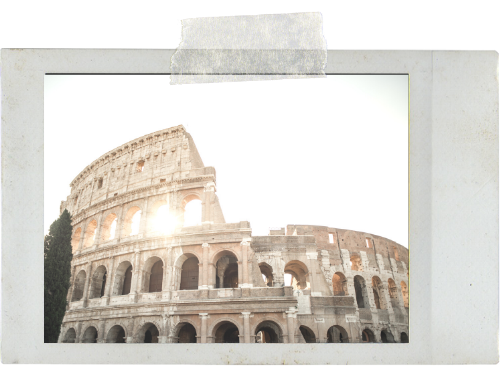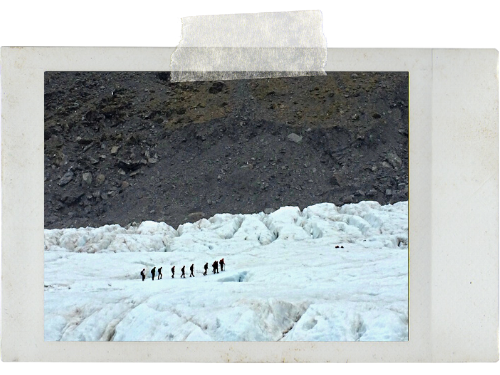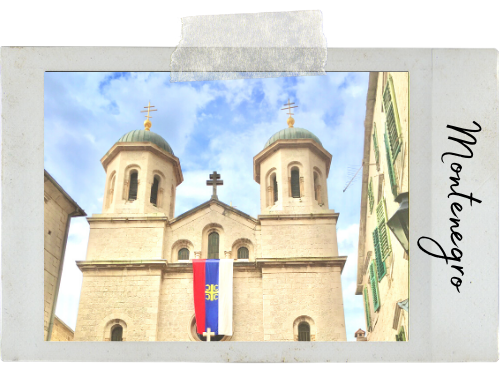Traveling to the New Seven Wonders of the World is a dream bucket list. These are magnificent and iconic structures that have withstood the ravages of time and left millions of visitors awestruck with their grandeur.
The original Seven Wonders of the Ancient World were listed around the 2nd Century BCE. However, among those structures, only the Pyramids of Giza are still intact. Five others on the list that were all destroyed are The Colossus of Rhodes, the Lighthouse of Alexandria, the Mausoleum at Halicarnassus, the Temple of Artemis, and the Statue of Zeus. And finally, the Hanging Gardens that is speculated if it even existed.
The New Seven Wonders of the World was selected by a Swiss foundation from a list of 200 existing monuments. The campaign began in 2000, and the final seven choices were declared in 2006. This list includes:
- Taj Mahal in India
- Colosseum in Italy
- Chichén Itzá in Mexico
- Machu Picchu in Peru
- Christ the Redeemer in Brazil
- Petra in Jordan
- Great Wall of China
Here is what you need to know about each incredible place.
Great Wall of China

The Great Wall is a series of fortifications that were built to protect the northern borders of the ancient Chinese empire. The construction started as early as the 7th century B.C. and continued till the rule of the Ming dynasty in the 17th century A.D.
While the wall is often imagined as a single unit, in reality, it consists of parallel layers. The actual length is considered around 5,500 miles. However, some Chinese studies consider it as long as 13,170 miles.
Most of the original walls built during the Qin dynasty have eroded. The construction in that period was done by using stones and rammed earth. The concept of the Great Wall was revived by the Ming dynasty in the 14th century. This time, a combination of bricks and stones was used. As a result, the construction was stronger.
The original walls were built to protect the borders of the various warring states within China. The later segments of the wall were developed to protect against the Mongol and the Manchu invasions.
Some of the strongest sections of the wall are around the city of Beijing. Stretching out over rolling hills, the structure creates an impressive image. With thousands of people visiting the walls every day, China has taken various steps to protect the structure from damage.
The Great Wall is also a UNESCO World Heritage site. It’s considered the only military architectural work that served a strategic purpose for around 2000 years.
As a visitor, you need to decide on the section of the wall that you will visit. The Badaling Great Wall is close to Beijing and is one of the most popular and the best-restored sections. Other options are the Juyongguan Great Wall and the Mutianyu Great Wall.
Can you see the Great Wall from space?
Actually, that’s a myth. Even so, it’s a unique testimony of Chinese civilization and a true masterpiece of human ingenuity.
The Taj Mahal
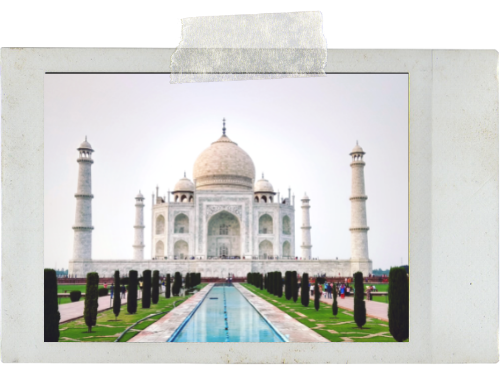
The Taj Mahal is one of the most known structures in the world with its architectural splendor and breathtaking beauty. It’s located in the city of Agra in India and on the banks of the Yamuna River.
The structure was built by Emperor Shah Jahan of the Mughal dynasty and holds the tomb of his wife Mumtaz Mahal. The tomb of Shah Jahan himself is also located in the mausoleum. Shah Jahan ordered the structure to be built in memory of his wife, who died in 1631.
The construction work started in 1632, and the entire work was actually completed in 1653. It took a team of 20,000 artisans, masons, and stone-cutters under the supervision of chief architect Ustad Ahmad Lahauri to complete this masterpiece. The total cost of the structure in today’s currency will be above $1 billion.
The main building lies inside a 17-hectare complex and is symmetrically planned. The structure is made from brick-in-lime mortar and the building blocks are marble and red sandstone. An intricate inlay work from 28 varieties of precious and semi-precious stones was used to decorate the marble face. However, none of the stones remain at present.
There’s an octagonal marble chamber in the interior of the building. These ornamented structures contain the cenotaphs of Shah Jahan and Mumtaz Mahal
The primary structure with its grand dome lies at one end of a beautiful garden with a central pool. The complex also contains a mosque, a guest house, and four free-standing minarets. The perfect balance of the elements and composition gives a unique aesthetic appeal to the structure. The Taj Mahal has been designated as a UNESCO World Heritage site as the finest piece of Indo-Islamic architecture.
One reason for the extraordinary beauty of the Taj Mahal is the use of ivory-white marble in its construction. The marble acquires various shades depending on the time of the day and the light falling on it. The beauty of the structure on a full-moon night is incredible.
Agra can be easily reached from New Delhi via road or train. New Delhi is connected with all the major cities of the world and the other prime cities in India.
Machu Picchu

This wonder is another UNESCO world heritage site located in southern Peru and set in a dramatic landscape where the tall cliffs of the Peruvian Andes meet the Amazon Basin. Actually, it’s a 15th-century Inca citadel built at an altitude of 2430 meters above sea level.
Undoubtedly, Machu Picchu is the most famous legacy of the Inca civilization. It’s considered that the structure was built during the period of Inca emperor Pachacuti and it was founded around 1450. However, the place was abandoned by the Incas after a century. It was in 1911 that an American explorer Hiram Bingham rediscovered Machu Picchu.
If you like prehistoric sites with a touch of mystery, you will love Machu Picchu. Scholars are still uncertain about the actual purpose behind building Machu Pichu and the role it played in Inca culture.
Moreover, some of the structures were carved from granite rocks. Since the Incas didn’t use the wheel, the exact method of transporting these stones across the rugged terrain remains a mystery.
Considering that the entire structure is built across 32,592 hectares of a mountain slope, it’s an architectural wonder. It consists of around 200 structures that were blended perfectly with the stunning natural beauty. Most of these buildings have dry stone structures. Many have been reconstructed in the past decades for the visitors.
The most popular structures in Machu Picchu are the ritualistic stone Intihuatana, the Temple of the Sun, and the Room of the Three Windows. The temple is considered as a place of worship of the sun god Inti. Interestingly, a stone at the top of the temple generates shadows that correspond to the two solstices.
Machu Picchu is the most visited tourist attraction in Peru. From Cusco, you can take a train to reach the town of Aguas Calientes to hike or take a bus to Machu Picchu. There are also multi-day treks around the site that more adventurous visitors can try out.
Petra
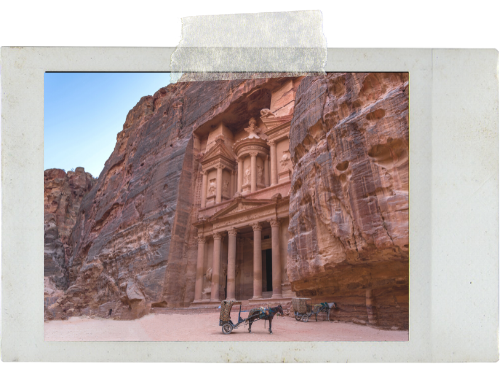
Situated between the Red Sea and the Dead Sea, Petra is one of the most famous archaeological sites in the world. Located in southwest Jordan, the area has been inhabited since prehistoric times. Around the 4th century BC, Petra became the capital of the Nabataeans tribes. During this period, it was an important center on the spice trade route between India, China, Egypt, and Greece.
Petra’s importance diminished as sea trade routes became popular and also due to natural disasters like earthquakes. The area is surrounded by high mountains and riddled with passages and gorges and lay unattended, It was introduced to the West by a Swiss traveler, Johann Ludwig Burckhardt in 1812.
The present-day entrance is through a narrow gorge that’s a natural split in sandstone rocks. Once a visitor emerges from the gorge to the magnificent scenery of the ancient city. The beautifully carved tomb and temple architecture is the major highlight of Petra and presents a fascinating view for the visitors. The most famous ones are the High Place of Sacrifice, the rock-cut monument of Al-Dayr, and the Khasneh.
Beyond that, Petra also had an ingenious hydrological system consisting of channels. Diversion dams, and cisterns. The system was designed to control flash floods and conserve water in the desert city. Other remains included ancient copper mines, temples, and churches.
As a UNESCO world cultural heritage, Petra is the most popular tourist destination in Jordan. To visit Petra, take a flight to Amman, the capital city of Jordan. Then, you can opt for a day trip to visit Petra or spend a night there to discover the place in detail.
The Colosseum
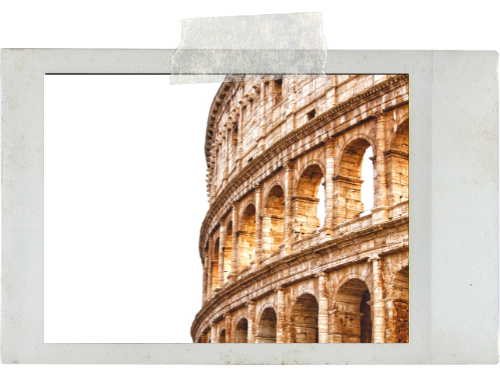
Gladiatorial combats are the stuff of legends, and that’s what the Colosseum is all about. Completed in 80 A.D., it’s the largest amphitheater built in the Rome Empire. The construction started during the rule of Vespasian and was completed by his successor Titus.
In reality, the structure was referred to as an amphitheater by Romans. The name Colosseum was adapted in the 6th century. It originated from the colossal bronze statue of Emperor Nero that was located beside the structure.
The imposing freestanding structure is made from stone and concrete. The oval shape has three levels of columns on the outer walls with 80 arches on each level. At the ground level, only 31 of the arches remain intact today. The Colosseum also consists of an underground or Hypogeum, which is an elaborate network of tunnels and chambers. This was where the gladiators, prisoners, and animals, were kept.
It seated more than 50,000 spectators who witnessed the gladiatorial games. Apart from that, contests between men and animals, prisoner executions, and larger battle scenes were also staged.
The last time gladiatorial fights took place in the Colosseum was around 435 AD. In the medieval period, it was also used as a church and also as a fortress by prominent Roman families.
In the subsequent years, the structure was significantly damaged by lootings, invasions, earthquakes, and even bombing raids during the Second World War. Stones from the structure were used to build other buildings around Rome.
It was not until the 19th century that plans to preserve the structure were formed. Various steps were taken to repair and restore the structure to its present state. Due to the ruined state of its interiors, the Colosseum can’t be used for any events at present.
Colosseum is one of the most popular tourist attractions in Rome, with the number of annual visitors estimated at around 6 million. The Colosseum is located in the heart of Rome and can be visited along with the Roman Forum and Palatine Hill.
Christ the Redeemer

This iconic statue stands atop the Corcovado Mountain and towers over the city of Rio de Janeiro. It was built through a joint effort of French sculptor Paul Landowski and Brazilian engineer Heitor da Silva Costa. The statue weighs 635 metric tons, has a total height of 126 feet, and outstretched arms measure 92 feet in length.
The structure is made of reinforced concrete with a layer of triangular soapstone tiles. It sits on a square pedestal made of stone. The statue was completed in 1931, and the cost of construction was $250,000 at that period. Most of the fund was raised by the church.
Originally, the statue was planned with the figure of Christ carrying a cross in one hand and a glove in another. But later, the concept was changed to an open-armed figure which is a symbol of peace. In 2006, the chapel at the base of the statue was consecrated to the patron saint of Brazil, Our Lady of Aparecida.
The statue was designed with special considerations on proportion and scale. From afar, it stands out like a cross. When a visitor comes close, it’s a gigantic human form. The white-colored material reflects light and makes the structure visible at all times. There are access doors to the various parts of the statue for cleaning the tiles.
But how was the massive statue moved up to the mountain top?
Actually, the statue was put together at the top of the mountain itself. The materials were transported to the top by using a cog-wheel train used mainly for tourists. The most daunting task was setting up the wooden poles to act as scaffoldings for the construction.
The imposing structure has become an emblem of not just the city but Brazil as a whole. A series of escalators and elevators were set up in 2003 to make it easy for visitors to reach the top. Once you reach Rio, the statue can be accessed by rail service and also by road.
Chichén Itzá
Located in the Yucatán peninsula, Chichén Itzá is one of the largest cities built during the Mayan civilization. The magnificent structures and stone monuments present a blend of architectural patterns, including the traditional Mayan and central Mexican styles.
As per the present explorations, the core area of the city is close to 1.9 square miles. It contains multiple temples, ballparks, and platforms. At present, the city is divided into old and new sections. The old section contains 6 ruins, and the new section contains about 20 ruins.
At the center of the site lies the famous El Castillo pyramid. Other famous structures include the Great Ball Court, the Temple of the Warriors, and the Osario Pyramid. Some of the other magnificent complexes are the Casa Colorada Group and the Central Group.
If you think Chichén Itzá is just about temples and architecture, think again. It also contains a Platform of the Skulls or a skull rack, that was used to display the heads of sacrificial prisoners or enemies defeated in battle.
The area was first used as a settlement around 455 A.D. and by the 10th century, the city was established as the regional capital. No major structures were constructed after 1300 AD. By 1400 AD, the city was on its path to decline. However, it was never completely abandoned.
The city rose to fame through a book, Incidents of Travel in Yucatan, written by American explorer John Lloyd Stephens in 1843. The book made Chichén Itzá a popular destination for historians and explorers.
The site is included in the UNESCO world heritage list and attracts millions of visitors annually. Chichén Itzá is a two-hour drive from the city of Cancun, Mexico. You should spend an entire day going through the site and enjoying the views.
Adventure awaits
Which of the Seven Wonders of the World are you most interested in visiting? Now that you have background into each, it’s time to start crossing them off your bucket list!
✈️ Bon voyage!

